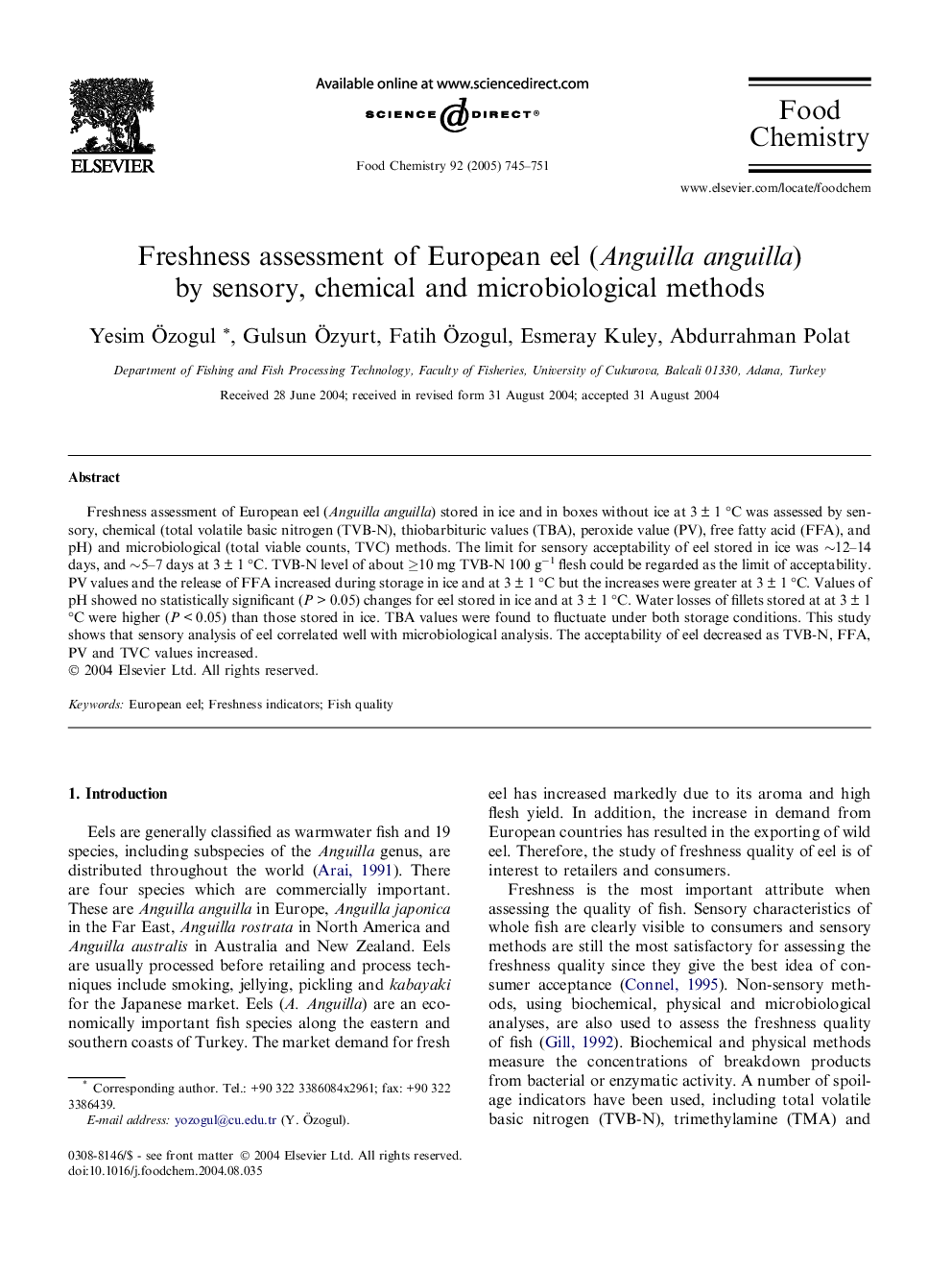| Article ID | Journal | Published Year | Pages | File Type |
|---|---|---|---|---|
| 10543992 | Food Chemistry | 2005 | 7 Pages |
Abstract
Freshness assessment of European eel (Anguilla anguilla) stored in ice and in boxes without ice at 3 ± 1 °C was assessed by sensory, chemical (total volatile basic nitrogen (TVB-N), thiobarbituric values (TBA), peroxide value (PV), free fatty acid (FFA), and pH) and microbiological (total viable counts, TVC) methods. The limit for sensory acceptability of eel stored in ice was â¼12-14 days, and â¼5-7 days at 3 ± 1 °C. TVB-N level of about â¥10 mg TVB-N 100 gâ1 flesh could be regarded as the limit of acceptability. PV values and the release of FFA increased during storage in ice and at 3 ± 1 °C but the increases were greater at 3 ± 1 °C. Values of pH showed no statistically significant (P > 0.05) changes for eel stored in ice and at 3 ± 1 °C. Water losses of fillets stored at at 3 ± 1 °C were higher (P < 0.05) than those stored in ice. TBA values were found to fluctuate under both storage conditions. This study shows that sensory analysis of eel correlated well with microbiological analysis. The acceptability of eel decreased as TVB-N, FFA, PV and TVC values increased.
Related Topics
Physical Sciences and Engineering
Chemistry
Analytical Chemistry
Authors
Yesim Ãzogul, Gulsun Ãzyurt, Fatih Ãzogul, Esmeray Kuley, Abdurrahman Polat,
